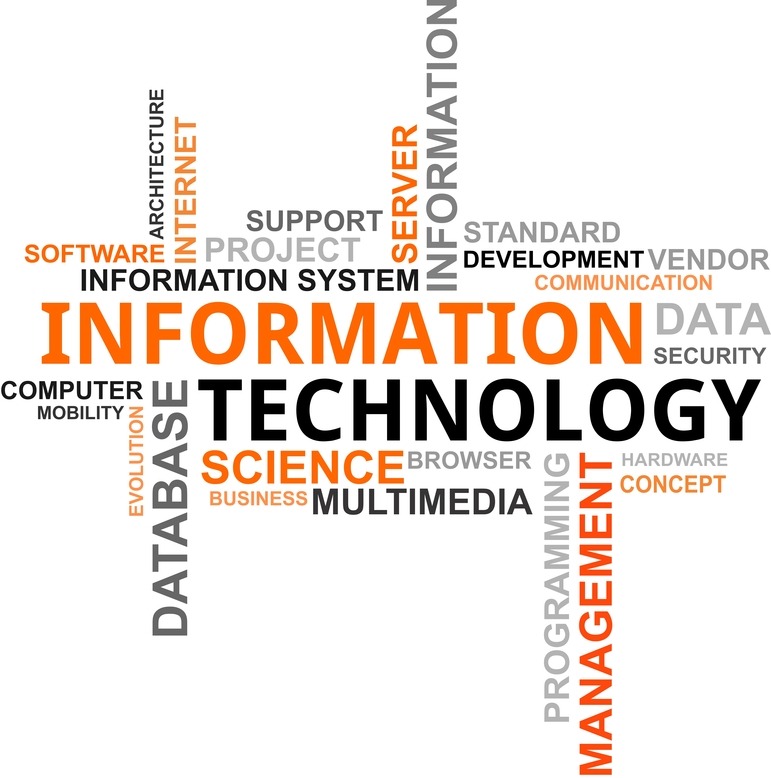Best Practices for ERP Implementation

The role of Enterprise Resource Planning (ERP) systems has expanded over the last few years from specific areas such as manufacturing, procurement, or HR to software packages for the entire business. In part, this means executives to end users involve themselves with the process of implementing and operating ERP software, not just IT.
With the added complexity, many companies find transitioning from existing systems to a new ERP time-consuming, costly, and risky. According to Panorama Consulting Solutions, an ERP consulting firm based in Centennial, Colo., over half of ERP implementations take longer than expected and/or cost more than budgeted, while less than half of ERP implementations met the expected benefits, and a mere 17% had more than eighty percent of the expected benefits. This doesn’t have to happen, however – you just need to take the right precautions.
Part of the problem is expensive software customization to make the software custom-fit the business. However, customization gets expensive quickly and may not meet expectations. This makes it important to choose the right starting software, to begin with, so customization can either be lived without or kept to a minimum.
Often, the problem isn’t the software; it’s how the software’s implemented. Here, we list eight best practices for ERP implementation:
The Eight Best Practices for Successful ERP Implementation
Thoroughly understand business processes and key requirements
This step is indispensable – you must understand what your current processes are and how you can improve them to evaluate and select your ERP system. Once your team fully understands your business processes, define and rank key business requirements as early as possible; it will make the rest of the project go much smoother.
Prioritizing business requirements is just as important as defining them
There is so much information available during the evaluation phase of implementation that it’s easy to get lost nitpicking over low-level processes or details, leading to “analysis paralysis.” A better way: Define priorities based on two goals: one, satisfying immediate business needs – the ones that affect normal business processes – and two, longer-term strategic goals. Defining business requirements is not a one-time deal resulting in a static set of requirements for selecting software. Instead, it’s ongoing and refined regularly to keep up with the changing needs of the company.
Then, and only then, make sure that the ERP software’s technical capabilities match the defined business requirements. Don’t just focus on the technical aspects of ERP software, but instead on what requirements are most important to the business. Software features or functionality that don’t line up with company business needs are wastes of implementation resources, time, and money that are better spent on software customization, training, or other, more profitable parts of the project.
Build a business case for ERP with a positive ROI
Unless you are a small company with only one or two decision-makers, a project as big (and expensive) as a new ERP system will need a comprehensive business case to prove its worth and “sell” it. A good case turns on tangible business benefits based on defined requirements and gauges success based on key performance metrics; facts are always harder to dispute than opinions. The case should address the concerns, needs, and objections of all project stakeholders. Involving the key stakeholders in creating a business plan can also be a strong way to build support for the new system.
A compelling business case assesses current system performance against expected post-implementation performance. Laying down key performance indicators (KPI) allows progress measurement during implementation and ensures a tie to real changes in performance. These metrics can also be used to check ERP software vendors and select which software modules match business requirements.
The question “Is software customization needed to meet a business demand?” often comes up during the implementation process. A business case with a positive ROI allows stakeholders to consider the merits of customization on the same basis as the original implementation. Your team can gauge investments in customization by whether they fit the requirements defined in the business case, based on performance metrics that are measurable, rather than “gut feeling”.
(For those of you who are in the promotional products or decorated apparel industry, you don’t have to worry about customizing a generic ERP system – check out ShopWorks OnSite for a ready-made ERP system built just for the industry.)
Ensure proper project management and resource commitment
Another indispensable part of ERP implementation best practices is having a dedicated project manager who’s involved in both planning and ongoing management. In addition, the company must also commit enough resources to the project before, during, and after implementation.
Don’t over-focus on whether the needed resources come from inside or outside the company – don’t rely entirely on your internal team, since you need ERP experts and business process re-engineering. Ideally, you should augment the internal team with people who have done ERP implementations before. However, make sure your internal organization is actively involved in the implementation because they will own the project once the implementation phase is over.
Strong project controls and governance are also needed to carry out an ERP system. Develop formal risk management and mitigation plan upfront that includes ongoing reviews of project phases throughout implementation, with the full participation of all inside and outside resources.
Gain executive and organizational commitment
Any ERP implementation is practically doomed if it does not have the full support and commitment of the company leadership. Company leadership support is arguably the most important factor in a successful ERP implementation; without this support, ERP initiatives will risk being “starved” for corporate funds and resources. High-level leadership is responsible for setting company business strategy and direction, so they should make the most important decisions about what the ERP system’s role is in running the business.
Lack of executive participation in an ERP project can also have legal consequences. Simply delegating a complex, huge project like an ERP implementation to someone outside of the executive team and walking away is a recipe for disaster.
The broad scope and duration of most ERP implementations can also cause changes in familiar workflows or business processes for people throughout the organization, whether they are directly involved in the implementation or not. Therefore, it’s important to gain broad company support during all phases of an ERP implementation. Finally, regular project reviews with the executive team or the project steering committee will keep them informed of project progress. It will also give a forum so that the right decision-makers can deal with issues that arise.
Recognize the value of early planning
In any ERP implementation, there is no substitute for careful planning; in fact, planning should begin during the earliest project phases. A project dragging out frustratingly longer than expected – a common complaint of companies that do ERP implementations – can partly be due to poor planning. Companies get excited about the benefits of implementing ERP and tend “dive in” without a fully developed plan. Don’t expect that hiring a consultant partway through the project because of planning failures early on is a quick fix solution.
The project plan should have time built into it for requirements definition, key performance measures, vendor evaluation, and choice. The best plans have buffers built into the schedule to account for testing, data migration, and unforeseen events that occur in every implementation. Companies that invest in comprehensive, upfront planning often have shorter implementation times and spend less money overall than less-planned efforts.
Focus on data migration early in the implementation process
Many companies tend to focus on software testing and configuration and put off dealing with data migration until late in the implementation process. Successful ERP implementations put data migration into the project plan as early as possible. A company’s data is one of its primary assets and issues with migrating data between legacy systems and a new ERP system can have a sizeable negative impact on business operations, especially problems exposed late in the process.
Once your team determines the scope of the data to be migrated, activities such as data scrubbing and mapping are independent of the larger implementation process. Similarly, your team can work on forms and reports without relying on the rest of the implementation. It’s also a good idea to include a data side into conference room pilots and testing processes so that you can test both data within the software and business processes simultaneously.
Your team must also decide how much historical data you should bring into the new system. Many companies just save everything and don’t make decisions about what information to save and what information to archive. Some companies must keep data to comply with the Sarbanes-Oxley Act; others worry about the threat of e-discovery and legal penalties. Nonetheless, all companies should set up a data retention and storage strategy. At the very least, you should de-duplicate the data to migrate. The old computer axiom, “garbage in = garbage out,” applies here; even a new ERP system won’t fix corrupted data.
Invest in training and change management
ERP implementations don’t just affect systems and business processes; they also involve people who may find it difficult to change roles, processes, and behaviors that they may have learned over many years of work. Employees can’t just change their behavior during the relatively short duration of an ERP software implementation. Managing change is a constant, ongoing process that should start on day one and continue throughout the implementation to the end-user training at the close of the project.
Change management is crucial to the success of an ERP initiative. You need to introduce your employees to the new processes and job roles over a time period so that they can accept and internalize these developments. Neglecting this aspect of implementation or putting it off until late in the project may result in organizational resistance to the new system, even to the point of jeopardizing the project. To be effective, training should concentrate on business workflows and how these changes affect job roles and the people who do the work.
Know why you’re implementing ERP
Successful ERP implementations are clearly defined and have a set of attainable goals. The companies that carry them out have done the work of defining requirements, establishing metrics, and building a business plan that clearly articulates what benefits the company expects from the implementation.
Some companies tend to look at what others or their competitors have done with ERP, especially if the company leaders have earlier experience with an ERP system at another enterprise. Indeed, companies should learn from others’ experiences, but to have a successful ERP installation, you need a clear vision and articulation of the needs unique to each firm.
In the promotional products or decorated apparel industry and looking for an ERP system to meet your needs? Demo Shopworks OnSite today.




